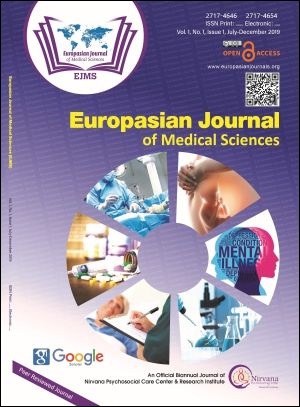Prevalence of Depression and its Associated Factors among Male Prisoners at Dillibazar Prison, Kathmandu, Nepal
Keywords:
Depression, Prisoners, Major Depression Inventory, NepalAbstract
Background: Depression is characterized by persistent low mood, lack of interest and low in energy. We conducted the study to find out the prevalence of depression and its associated factors among male prisoners in Dillibazar prison.
Methods: A cross-sectional analytical design was conducted in 2018 among 195 male prisoners of Dillibazar by using systematic random sampling. The self-administered questionnaire technique was used for data collection along with the standard Major Depression Inventory (MDI) tool of WHO for rating the level of depression. The data were coded and tabulated using Epi-data. The analysis was done by SPSS 16 version. A chi-square test was done for the associations between the variables.
Results: The study revealed that the prevalence of depression among male prisoners at Dillibazar prison was (45.6%).Among them, (28.2%) met the criteria of severe depression, (6.7%) moderate depression, while rest (10.8%), of mild depression. It was found that the duration of stay in prison, history of alcoholism, history of smoking, frequency of disputes is not statistically significant with depression. Depression was found a statistically significant association with p-values less than 0.05 at a 5% level of significance with a history of past illness and a history of drug abuse.
Conclusion: Thus, we can conclude that half of the prisoners are having any kind of depression during their stay in prisoners. Thus this study will be useful in drawing the attention of the authorities towards the value of mental health among prisoners in Nepal.
Downloads
Downloads
Published
How to Cite
Issue
Section
License
All articles published in EJMS are licensed under the Creative Commons Attribution 4.0 International License (CC-BY 4.0). The author(s) as the copyright holder will retain the ownership of the copyrights without any restrictions for their content under the CC-BY 4.0 license, and allow others to copy, use, print, share, modify, and distribute the content of the article even in commercial purpose as long as the original authors and the journal are properly cited. No permission is required from the author/s or the publishers. Appropriate attribution can be provided by simply citing the original article.
On behalf of all the authors, the corresponding author is responsible for completing and returning the agreement form to the editorial office. More information about the terms and conditions, privacy policies, and copyrights can be found on the webpage of the Creative Commons license privacy policy. https://creativecommons.org/licenses/by/4.0/

